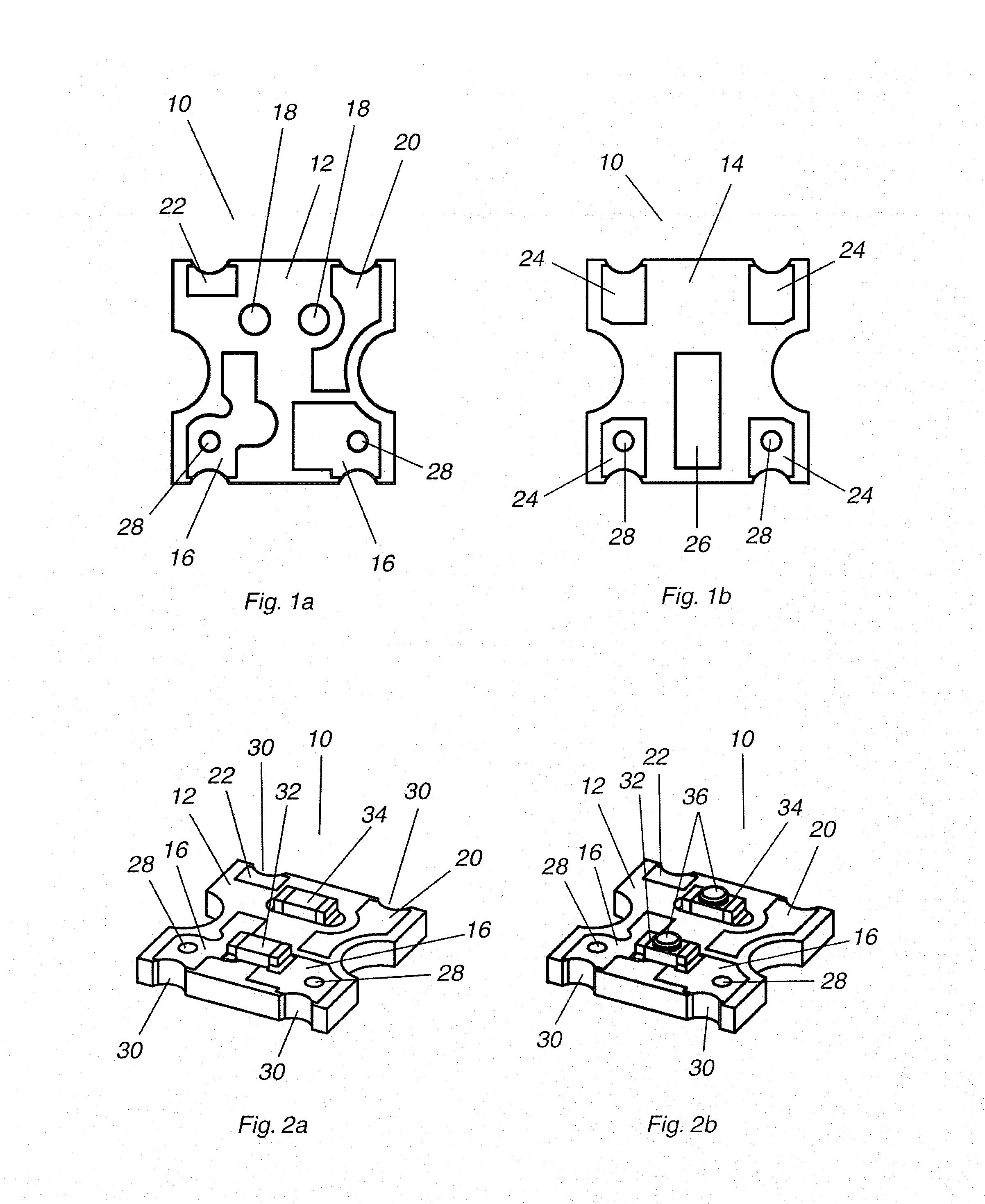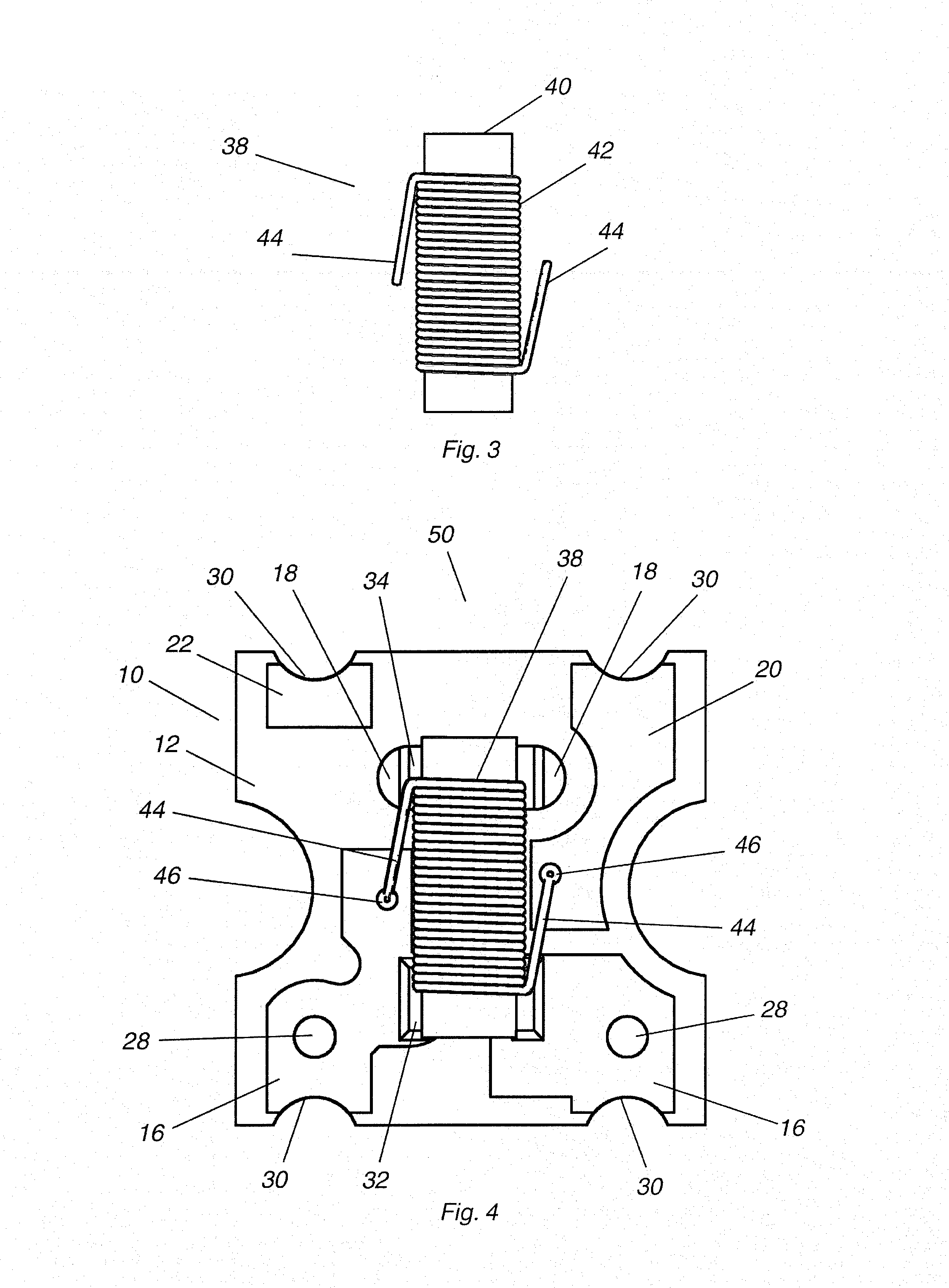Surface mount bias tee
- Summary
- Abstract
- Description
- Claims
- Application Information
AI Technical Summary
Benefits of technology
Problems solved by technology
Method used
Image
Examples
Embodiment Construction
[0030]As shown in FIGS. 1a and 1b, a printed circuit board 10 has component bonding pads on a top face 12. These pads are used to bond several components or bodies, which for the first component or body is a capacitor and for the second component or body may be a spacer element designed for interchangeability with the first body, or may be a second capacitor which in this circumstance is a noncircuit element functioning as a spacer. The component bonding pads include a pair of first body bonding pads 16, a pair of second body bonding pads 18, an inductor bonding pad 20, and an open bonding pad 22. The bottom face 14 has four bottom bonding pads 24 and a bonding pad which is preferably treated as a ground pad 26. Four notches with edge metallization 30 provide conductive signal paths between the bonding pads on the top face 12 and the bonding pads on the bottom face 14. The notches are a preferred feature serving to reduce the chances of the component tombstoning (tipping on end) dur...
PUM
 Login to View More
Login to View More Abstract
Description
Claims
Application Information
 Login to View More
Login to View More - R&D
- Intellectual Property
- Life Sciences
- Materials
- Tech Scout
- Unparalleled Data Quality
- Higher Quality Content
- 60% Fewer Hallucinations
Browse by: Latest US Patents, China's latest patents, Technical Efficacy Thesaurus, Application Domain, Technology Topic, Popular Technical Reports.
© 2025 PatSnap. All rights reserved.Legal|Privacy policy|Modern Slavery Act Transparency Statement|Sitemap|About US| Contact US: help@patsnap.com



